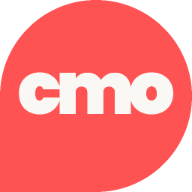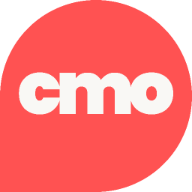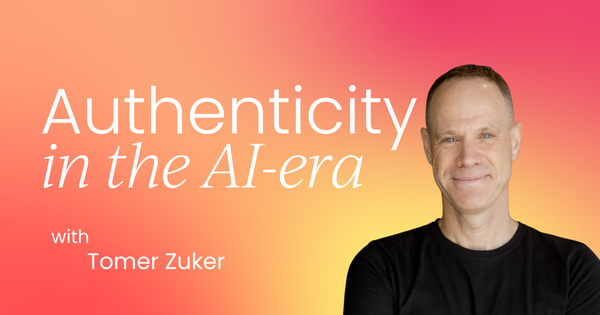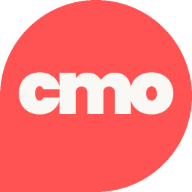Note: This article is based on Tomer's podcast episode on CMO Convo.
LinkedIn has evolved dramatically since I joined in 2007. And, nowadays, the platform has become essential for marketing leaders.
But the catch is many professionals fear that leveraging AI tools for content creation and engagement will make them sound generic or "cringe." However, with the right approach, you can use AI to your advantage and create a powerful personal brand without sacrificing what makes you unique.
In this article, I'll share insights from my 25 years in the tech industry, where I've worked with giants like Microsoft and Amazon Web Services, as well as with leading AI startups.
We’ll explore why personal branding is essential, the common mistakes people make on LinkedIn, and how to effectively integrate AI into your marketing workflow. I'll also introduce the REAL framework for organizational AI adoption and share my vision for the future of marketing with AI agents.
The three components of LinkedIn success
A strong personal brand on LinkedIn is built on a combination of three key components: your profile, your network, and your engagement.
When you blend these elements effectively, you can achieve a real impact.
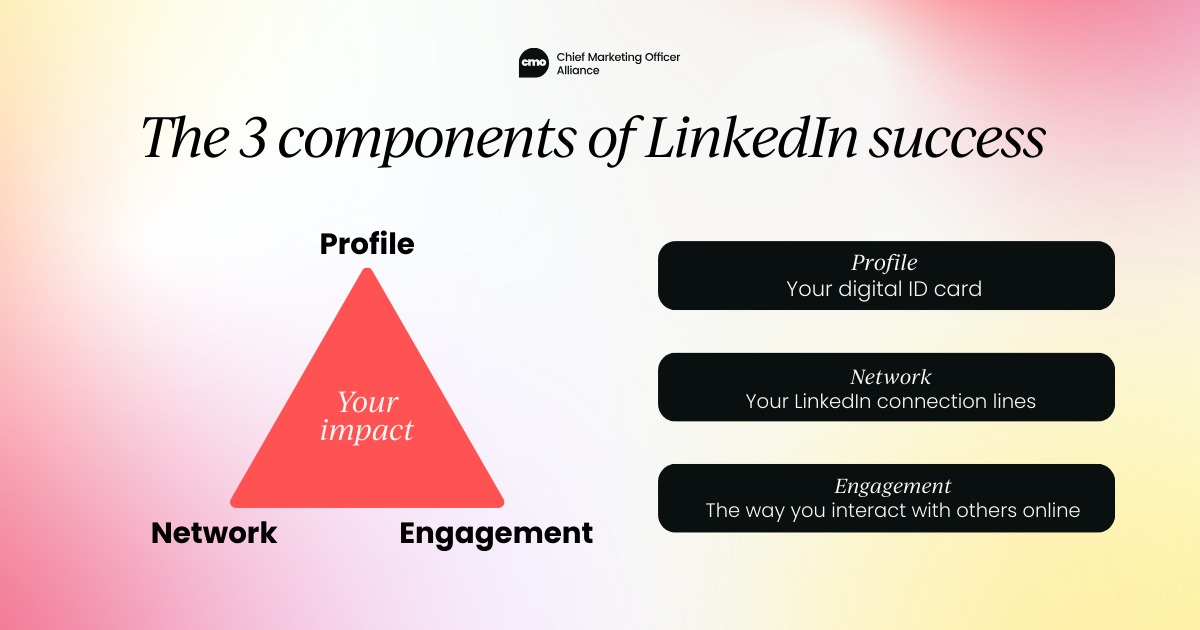
For example:
Profile optimization serves as your digital ID card. Your profile must work for you, serving your personal objectives, career goals, and company missions simultaneously. Think of it as a 24/7 representative of your professional identity.
Network leverage involves strategically using first, second, and third-degree connections to amplify your message. Your network becomes your distribution channel, echoing your expertise across the platform.
Activation and engagement encompasses your content strategy and how you interact with others on the platform. This is where your voice comes alive and where real relationships form.
Common mistakes that undermine authenticity
In the same way you can see what works well for creators, you can also spot some pretty common mistakes.
The most frequent error I observe, for example, is excessive self-promotion.
People forget they should offer perspective and value to their audience. Nobody enjoys being sold to constantly. When you pitch too hard, you create distance between yourself and your target audience.
Another critical mistake is striving for perfection.
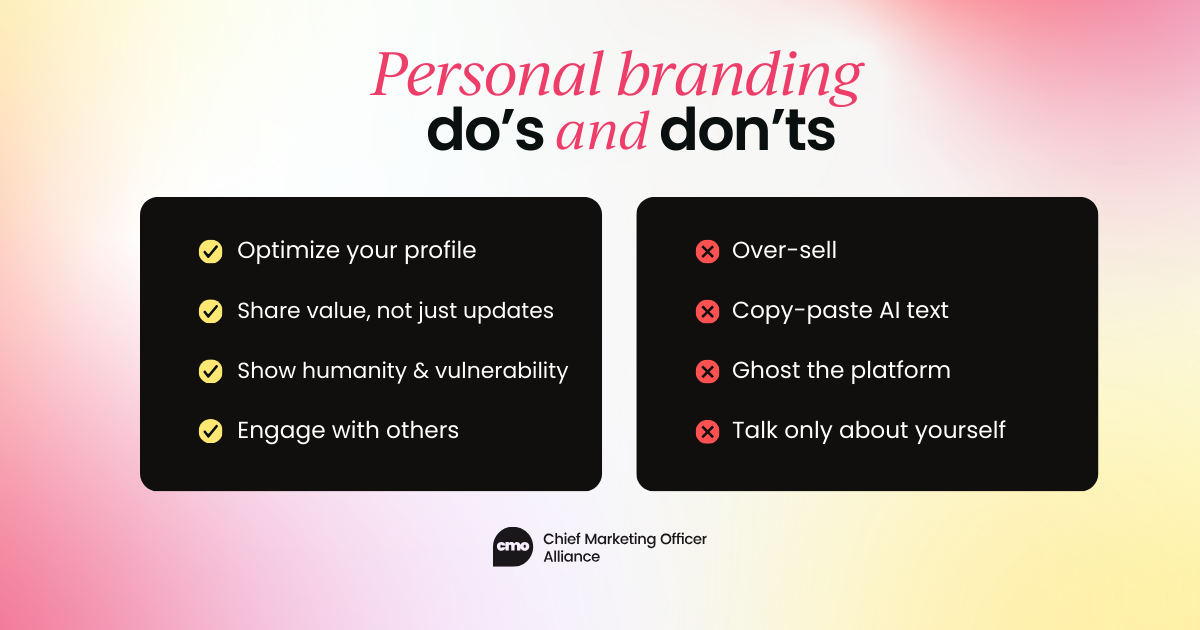
Perfection kills authenticity. LinkedIn has developed this reputation as a platform where everything must be polished and flawless. Working in tech companies, especially startups, is challenging. We face crises in our personal and professional lives. It's acceptable to show vulnerability and humanity.
Inconsistency represents the third major pitfall. The LinkedIn algorithm can be frustrating when your carefully crafted posts receive minimal engagement. Many people give up at this point. You don't need to post daily, but showing up once or twice weekly is crucial. I publish four to five times per week, though that frequency isn't necessary for everyone.
AI in content creation and maintaining authenticity
The explosion of AI-generated content on LinkedIn over the past two years has created a sea of generic, uninspiring posts.
The challenge lies in leveraging AI tools effectively while maintaining your unique voice and perspective.
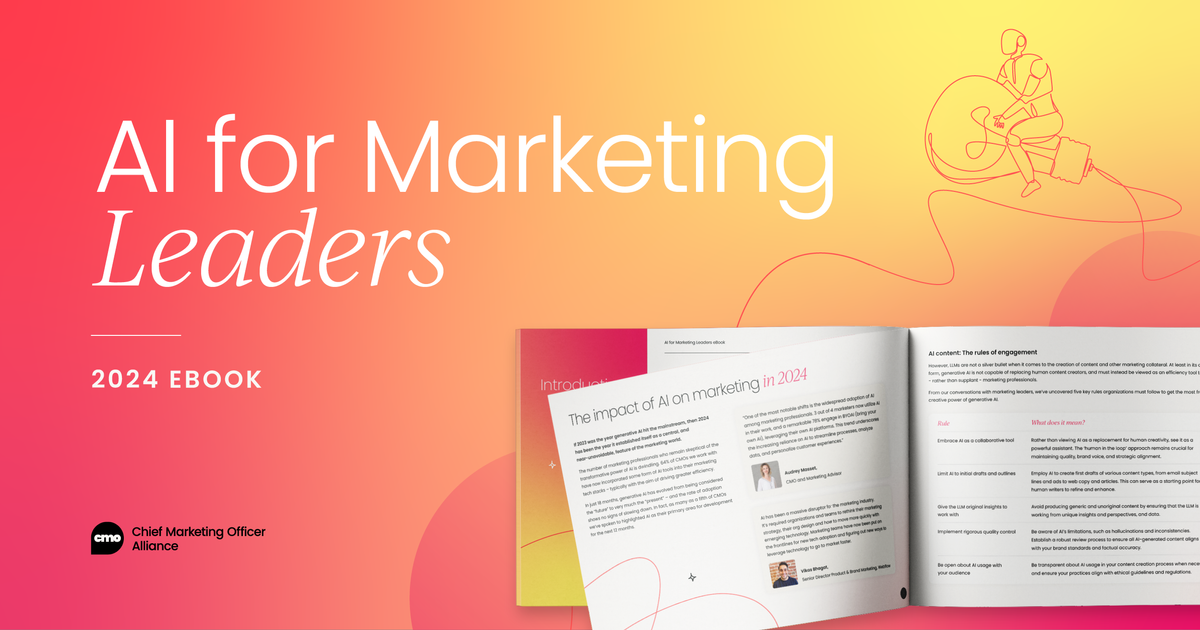
Training AI to match your voice
Modern AI tools like ChatGPT, Gemini, Perplexity, and Claude have become remarkably sophisticated. ChatGPT's memory feature remembers your style, tone, strengths, and weaknesses. You can train these models to write in your voice by:
- Creating custom GPTs for specific domains
- Developing native-oriented discussions with the AI
- Consistently refining outputs to match your personality
However, as a general rule, you should never copy and paste AI-generated content directly.
For instance, I always inject my personality, unique perspective, experience, and humor. This is crucial because I meet many people in real life. If you use perfectly polished AI text but have a different personality or accent in real life, you can create a trust crisis with your connections.
In short, creating a gap between your online persona and real personality erodes trust. LinkedIn revolves around relationships, trust, and confidence.
The value of cultural perspective
Coming from different cultures and bringing diverse perspectives adds tremendous value to marketing creativity. We shouldn't outsource ourselves entirely to AI. Instead, we should use these tools as enhancers while maintaining our unique viewpoints and experiences.
Implementing AI at the organizational level
We are past the hype curve of AI, and now companies are looking for a real return on investment. The challenge isn't just using AI but using it in a way that fits your specific business needs.
My recommendation is to approach AI adoption using the REAL framework: Relevance, Executive Buy-in, Adoption, and Learning.
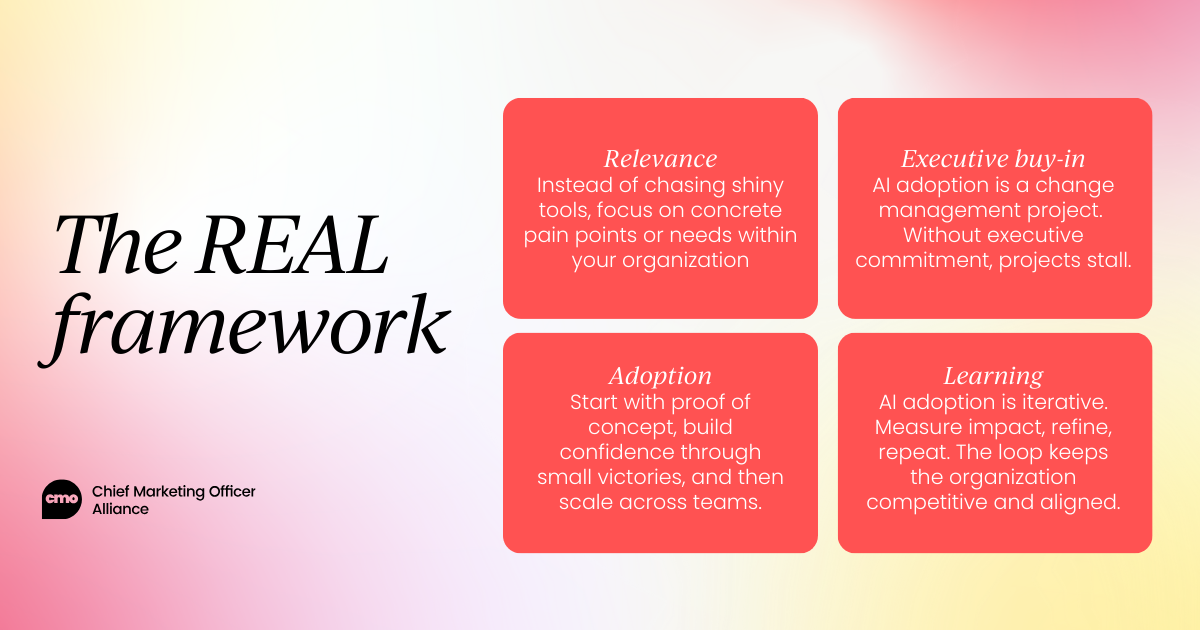
The REAL framework for AI implementation
Relevance: Identify concrete pain points or needs within your organization. With over 35,000 AI tools available, focus on those that directly address your specific challenges. If you're not producing TikTok videos, don't waste time on trendy video tools.
Executive buy-in: AI implementation isn't just another tool purchase. It's a game-changing initiative requiring change management. The impact touches technology, human resources, and processes. Senior executive commitment is essential because changes will affect your products, go-to-market strategy, and people.
Adoption and access: Create a comprehensive implementation plan including:
- Enablement programs
- Proof of concepts (POCs) or proof of values (POVs)
- Quick wins to build trust and confidence
- Structured rollout to avoid failure
Learning and loops: Establish KPIs and continuously measure progress. If your goal is cost reduction in content production, measure the time currently required to create blog posts, videos, or images. Track how AI tools reduce these timelines. We're talking about potential 100% improvements in cost savings and time to market.
The rise of AI agents and the future of marketing
While marketing is an early adopter of AI, other departments (like research and development) are also seeing massive changes.
For example, the CEO of Microsoft, Satya Nadella, said that while AI currently generates around 30% of their code, he expects that number to reach 70% in the very near future. It's a fundamental shift in mindset across all departments, not just marketing.
Given all this, one thing is clear: the marketing department is becoming increasingly technical.
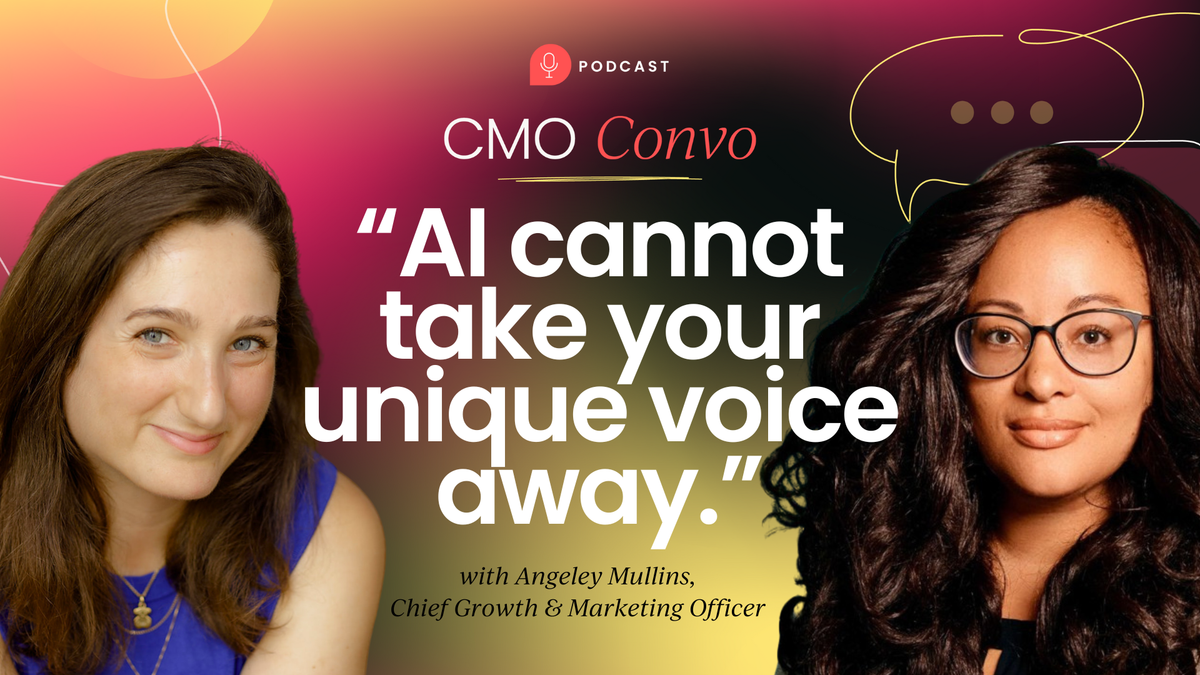
It's no longer just about art, creativity, and strategy. Data and technology now play central roles. The emergence of AI agents represents the next evolution in marketing automation.
So here are two approaches to AI agent implementation
Packaged solutions like Clay offer built-in agents with API integrations. These solutions work well for teams without technical resources or with straightforward needs.
Customized platforms like Make allow you to create tailored agents but require developer expertise. I'm seeing the emergence of marketing developers within marketing departments. These professionals create and maintain AI agents specifically for marketing needs, ensuring rapid deployment without relying on R&D resources.
Creating your content machine with AI
Consider the friction in traditional content creation: strategy flows to product marketing, briefs go to content teams, multiple iterations occur for compliance and approval, then assets deploy through organic or paid channels. AI agents can automate much of this process while maintaining human oversight for quality control.
These agents can:
- Conduct research and identify personas
- Generate content backbones
- Slice content into multiple formats
- Align outputs with brand guidelines
- Integrate with marketing automation systems
The intelligence of these systems comes from their foundation in large language models (LLMs). Unlike traditional automation scripts, they understand context and can engage in "vibe marketing" through natural dialogue.
Maintaining relevance in an AI-saturated world
As we gain the ability to create content at unprecedented scale, the challenge shifts from production to relevance. The competition now centers on creating the best AI tools for generating meaningful, engaging content.
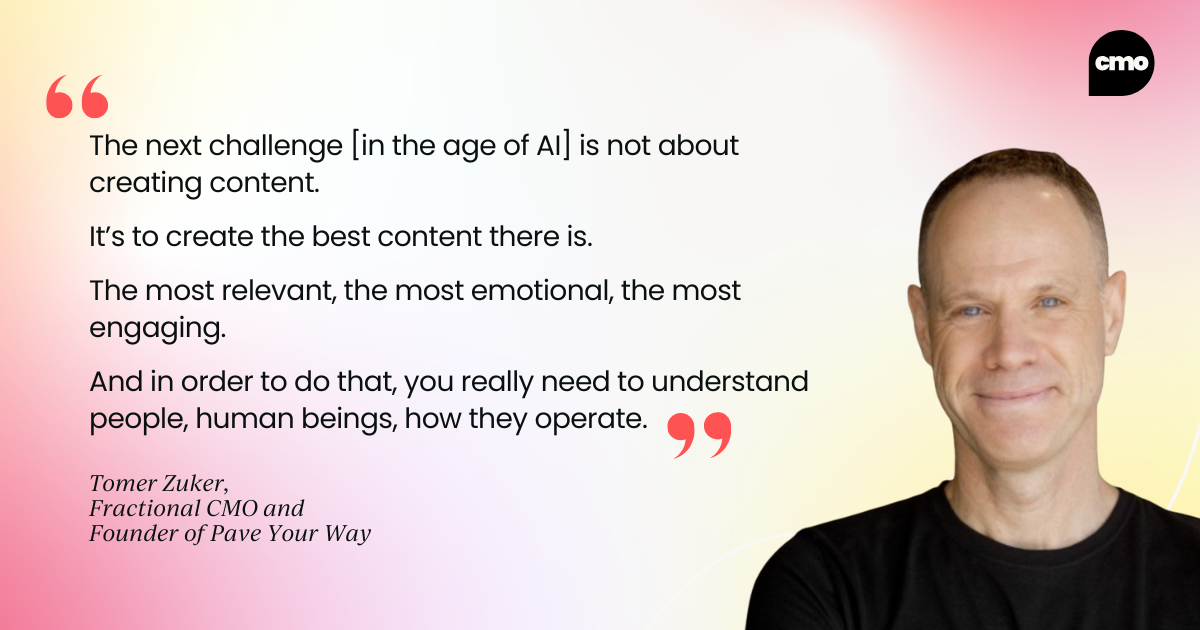
The enduring power of storytelling
Despite technological advances, the emotional layer of content remains uniquely human. Our evolutionary wiring makes us natural storytellers. We love telling stories, hearing stories, and sharing stories with others.
While AI can be trained to write emotionally, understanding human nature and crafting narratives that resonate requires human insight. The next frontier isn't about creating more content but creating the most relevant, emotional, and engaging content possible.
Building your AI band
Looking ahead, I envision every marketing manager having their own group of AI agents. Think of it as a rock band that knows your expertise, tone of voice, and needs. These agents will become personal assets, like your website or LinkedIn profile.
Rather than fearing replacement, we should embrace augmentation. AI tools make us better marketing managers by multiplying our capabilities and freeing us to focus on strategy, creativity, and human connection.
To wrap up
Success requires balancing technological adoption with human authenticity. By following the REAL framework, avoiding common LinkedIn pitfalls, and viewing AI as an augmentation tool rather than a replacement threat, marketing professionals can thrive despite these recent challenges.
The key is maintaining our humanity, our ability to understand emotions, craft compelling narratives, and build genuine relationships.
As we navigate this transformation, remember that the most successful marketers will be those who combine AI's efficiency with human creativity and authentic connection.
The playbook for this new era is still being written. By staying curious, testing new tools relevant to our needs, and maintaining our unique perspectives, we can shape the future of marketing together.






.png)


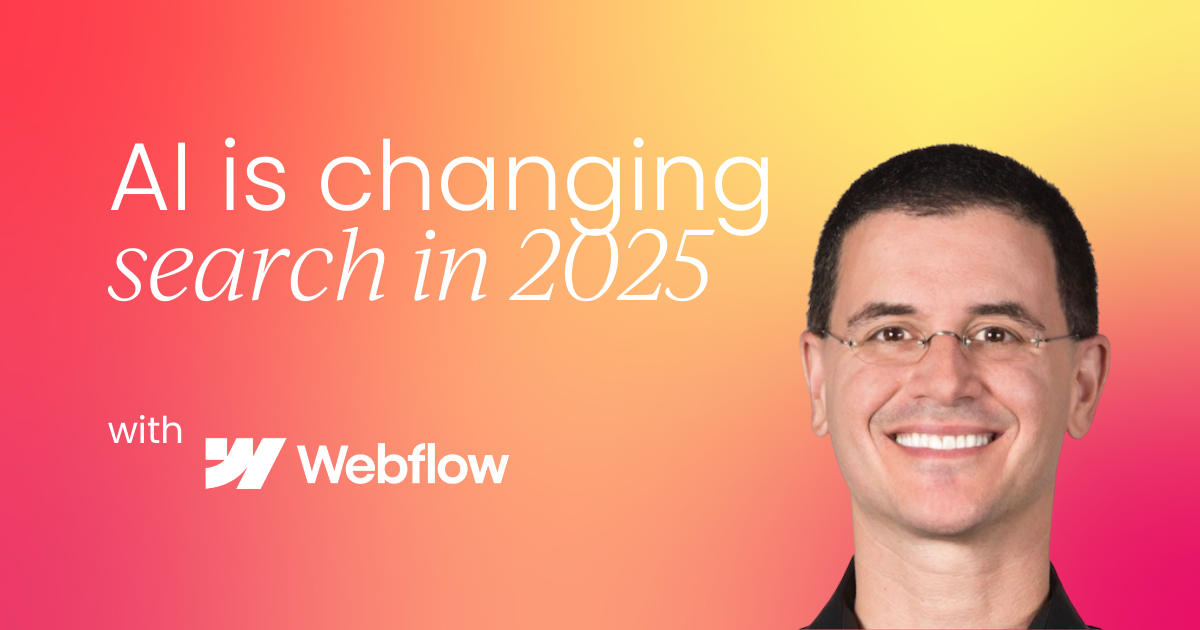
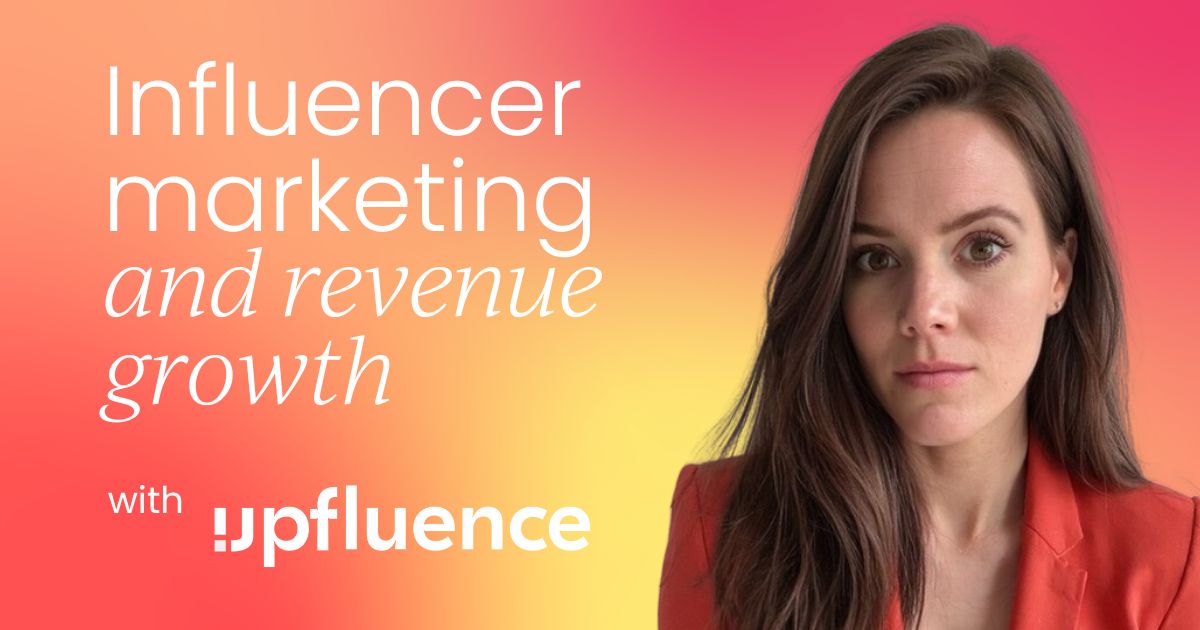
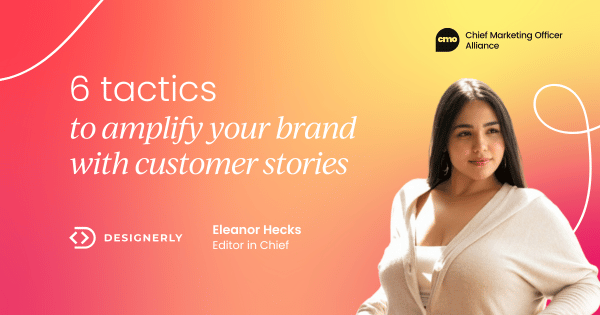




 Follow us on LinkedIn
Follow us on LinkedIn